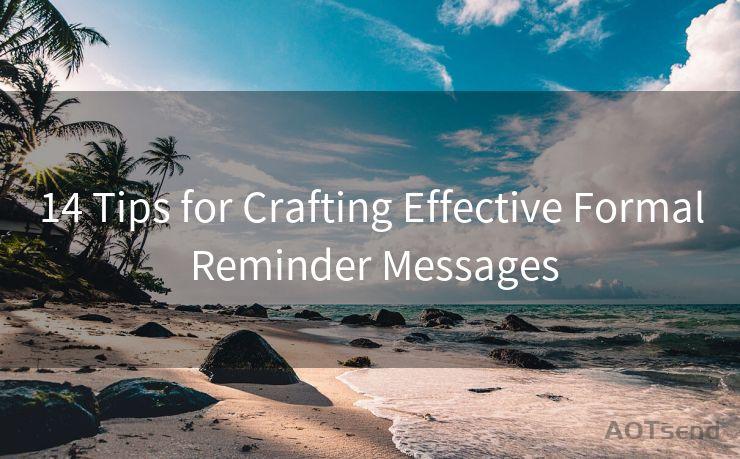14 Tips for Crafting Effective Formal Reminder Messages




Crafting effective formal reminder messages is an essential skill for professionals in various fields, from administrative assistants to customer service representatives. A well-written reminder can gently nudge recipients to take action without being intrusive or offensive. Here are 14 tips to help you create impactful formal reminders that get results.
1. Clear and Concise Subject Line
Start with a subject line that summarizes the purpose of your message. For example, "Reminder: Upcoming Meeting on Project XYZ" gives the recipient a clear idea of what the email contains.
2. Formal Greeting
Always begin your message with a formal greeting, such as "Dear [Recipient's Name]," to set a professional tone.
3. State the Purpose
Immediately after the greeting, briefly explain the purpose of your message. For instance, "This is a reminder about the upcoming meeting scheduled for [date and time]."
4. Provide Details
Include all necessary details, such as the date, time, and location (if applicable) of the event or task being reminded. This helps the recipient quickly recall the specifics.
5. Use Polite Language
Maintain a polite and respectful tone throughout your message. Avoid using aggressive or demanding language.
6. Highlight Importance
If the reminder is urgent or critical, make sure to emphasize this without being too pushy. For example, "Please note that this meeting is crucial for the progress of our project."
7. Include Relevant Information
Attach any relevant documents or links to resources that might help the recipient prepare for the event or task.
8. Offer Assistance
If possible, offer to assist the recipient in case they need help or have any questions. This shows that you're willing to go the extra mile.
9. Confirm Receipt
Request a confirmation of receipt to ensure that your message has been received and understood. This can be a simple reply email or an acknowledgment via another communication channel.
10. Set Clear Expectations
Make sure your reminder sets clear expectations about what is expected from the recipient. For example, "Please confirm your attendance by [date]."
11. Avoid Redundancy
Keep your message concise and avoid repeating information that has already been communicated. Redundancy can lead to confusion and frustration.
12. Proofread Carefully
Always proofread your message carefully to avoid any grammatical or spelling errors that might detract from its professionalism.
13. Follow Up Appropriately
If necessary, follow up with the recipient after sending the reminder to ensure that action has been taken. However, avoid being too persistent or pushy.
🔔🔔🔔
【AOTsend Email API】:AOTsend is a Managed Email Service for sending transactional emails. Support Email Types: reminders, authentication, confirmations, notifications, verification codes, invoices, password resets, account activations, billing statements, two-factor authentication (2FA), and one-time passwords (OTP) emails, etc. $0.28 per 1000 Emails. 99% Delivery, 98% Inbox Rate.
You might be interested in:
Why did we start the AOTsend project, Brand Story?
What is a Managed Email API, How it Works?
Best 25+ Email Marketing Platforms (Authority,Keywords&Traffic Comparison)
Best 24+ Email Marketing Service (Price, Pros&Cons Comparison)
Email APIs vs SMTP: How they Works, Any Difference?

14. Close Professionally
End your message with a professional closing, such as "Sincerely" or "Best regards," followed by your name and contact information.
By following these tips, you can craft effective formal reminder messages that are clear, concise, and polite. Remember, the goal is to gently remind the recipient without being intrusive, ensuring that the desired action is taken in a timely manner. With practice, you'll refine your ability to communicate professionally and effectively in a variety of formal settings.




Scan the QR code to access on your mobile device.
Copyright notice: This article is published by AotSend. Reproduction requires attribution.
Article Link:https://www.mailwot.com/p1598.html



